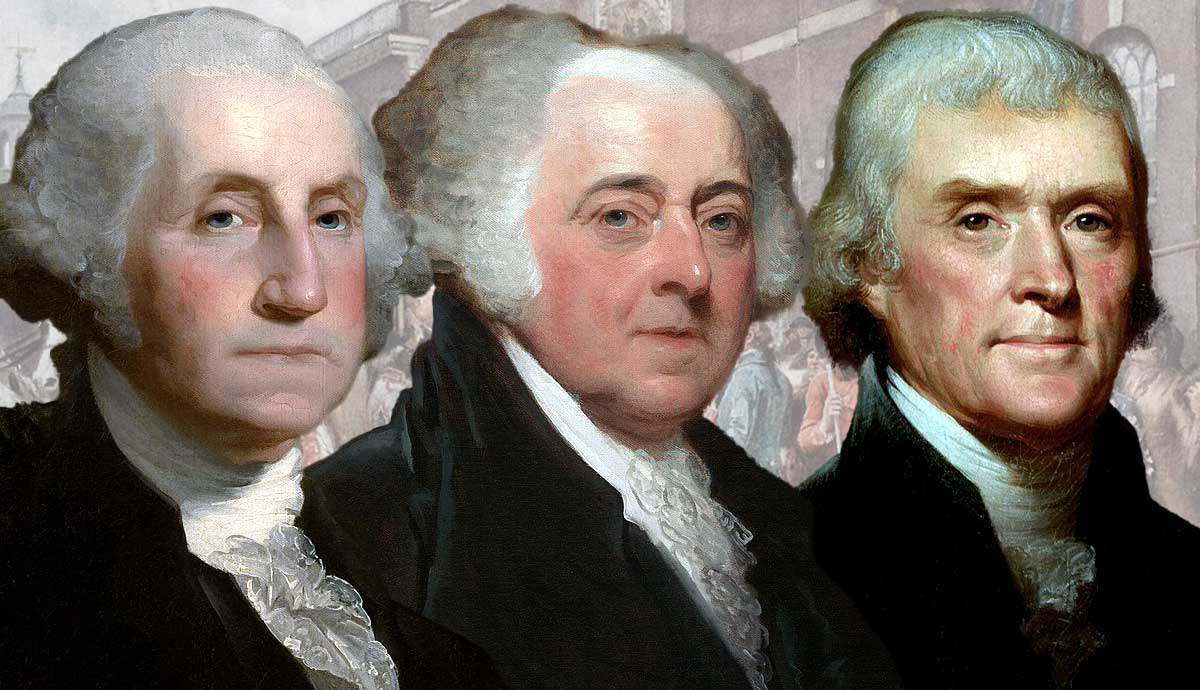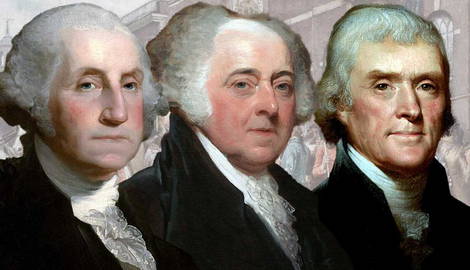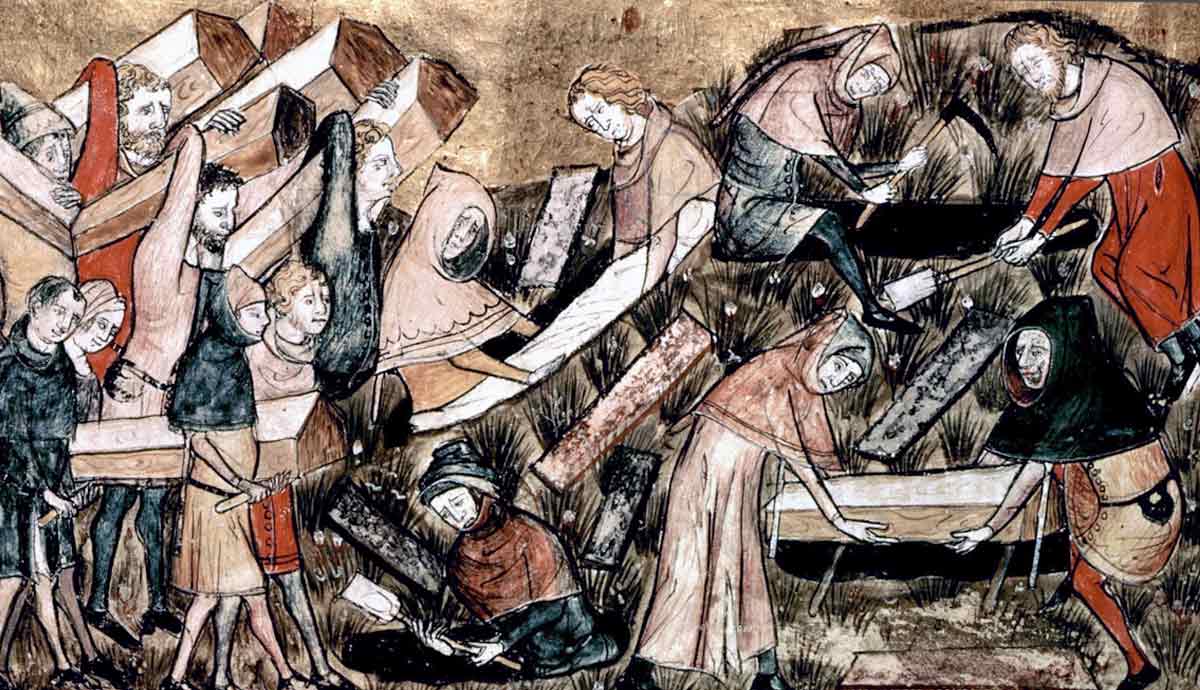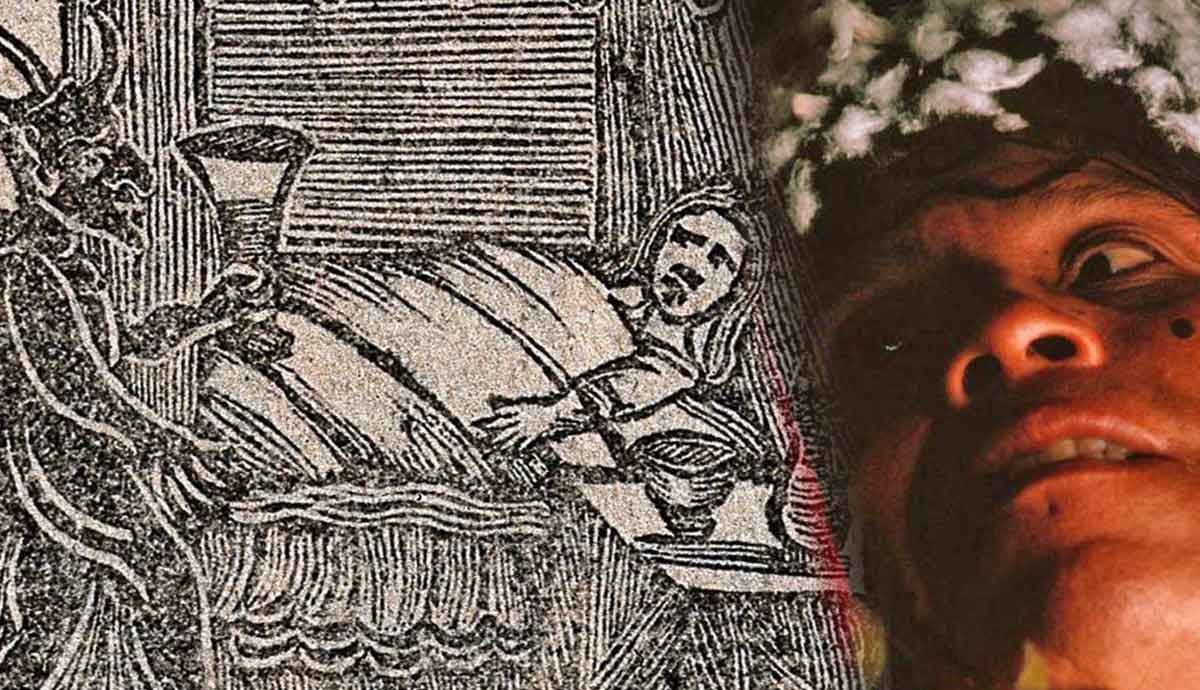
It can be argued that the first American elections were far from democratic. George Washington, a national hero, was essentially drafted into office, by today’s standards. Yet, by the following two elections, the process evolved, and by the third, fierce competition for power and a winning ideology led to the emergence of the first political parties the founders so desperately tried to prevent when they created the Electoral College.
Creating the Process

When it became apparent that the Articles of Confederation, which served as the nation’s first constitution, created a weak central government with limited powers, the Founding Fathers called for a convention in Philadelphia to form a government capable of managing the county’s needs while balancing power between the national and state governments. Creating the executive branch proved to be one of the most significant and contentious issues at the Constitutional Convention of 1787.
The founders were skeptical of direct democracy and the will of the general public to elect a president, fearing potential manipulation or uninformed decisions. The conversation veered toward having Congress select the president, but concerns about the separation of powers and the potential for corruption promptly led to opposition. Ultimately, the founders proposed the Electoral College. According to Paul F. Boller Jr.’s Presidential Campaigns (1996, p. 3),
“Each state, according to their plan, would choose several presidential electors and then the electors, collectively known as the Electoral College, would vote for two people, with the one receiving the most votes becoming President and the one with the next most becoming Vice President – States could choose their electors any way they pleased and each state has as many electors as Senators and Representatives.”
By having electors as intermediaries, the founders hoped to avoid the formation of political parties and encourage deliberation in the selection of the nation’s speaker. The Electoral College, which many today see as confusing, seemed like the perfect safeguard against the potential rise of a demagogue or an unqualified candidate, as the electors were expected to be knowledgeable individuals who could prevent unfit individuals from assuming the presidency. In a great irony, the electors now pledge their votes to the candidate chosen by a popular vote in each state.
1789: Starting With Washington

Interestingly, for a nation that prides itself on its democratic process, the first-ever presidential election in United States history was highly undemocratic. Everyone at the Constitutional Convention knew that Washington would take the lead as the nation’s first executive—even if he himself did not yet know it.
The Revolutionary War General and national hero was already fifty-six years old and quite content in retirement at his Mount Vernon estate on the Potomac River. Hence, the courting of America’s first president started. “We cannot, sir, do without you!” proclaimed a letter from a Maryland official.
Although weary, Washington, who had presided over the Convention, knew the importance of getting the nation off on a proper footing lest the American electorate turn against the US Constitution. Still reeling from the American Revolution and afraid of an abusive monarch-like figure presiding over their young nation, Americans needed to feel secure in their choice of the first magistrate of this great democratic experiment.
The letters continued pouring in, and George was starting to see the inevitability of the last honor bestowed upon him by his nation. Alexander Hamilton made the certainty more pronounced when he wrote to Washington: “Every public and personal consideration will demand from you an acquiescence in what will certainly be the unanimous wish of your country.”
On February 4, 1789, without fanfare, primaries, conventions, or campaign speeches, the Electoral College granted all of its 69 votes to General Washington. John Adams became vice president with 34 votes when some electors cast their votes for others to ensure that Adams got symbolically fewer votes than Washington. For the general, the suspense of will they or won’t they was over—but not the apprehension of the momentous task before him. Washington became the first-ever US president in New York on April 30, 1789.
1792: Return of Washington

George Washington was not planning on serving a second term, yet circumstances in his cabinet prompted him to reconsider. Leading up to the second national election, the aging statesman expressed his desire to return to Mount Vernon and retire, and each time, those close to him pushed back. Madison told him that the potential of a different person taking over the reins of the executive branch “would give a surprise and shock to the public mind.”
Washington knew that the second go-round would not be smooth sailing. Differences in policy and philosophy between his cabinet members, particularly the Secretary of Treasury, Alexander Hamilton, and the Secretary of State, Thomas Jefferson, were just a microcosm of the broader ideological divisions within the country regarding the direction of the new government and its role in the economy and foreign policy. Jefferson’s followers, Democratic-Republicans, advocated for a weaker national government and championed agrarianism, while Hamilton and Washington’s supporters, the Federalists, envisioned a strong central government, a robust financial system, and industrial development.
The ideological divide between the two opposing parties, evident in Washington’s cabinet, spurred on the growing partisan press aligned with each faction, intensifying political debates and influencing public opinion. Washington felt he needed to remain at his post lest the intensifying political division tore his beloved nation apart. After indicating he was begrudgingly willing to stay, the president was unanimously re-elected with 132 electoral votes. John Adams received 77 votes, with a handful of votes for the vice president going to Democratic-Republicans—George Clinton of New York and Thomas Jefferson—reflecting the early factional divides within American politics.
Adams was said to have remarked, “Damn ‘em, damn ‘em, damn ‘em!” when he heard the news. He was once again passed on for president.
1796: Federalist Succession

In 1796, Fisher Ames, a Federalist Congressman from Massachusetts, remarked on Washington’s decision to step down as “a signal, like dropping a hat, for party racers to start.” The fierce party competition to find Washington’s successor set America on a path toward its first contested presidential election in history. With no precedent in choosing candidates, Congress held an informal meeting to agree on the individuals to be put forward on the ticket. John Adams was the Federalists’ natural choice and, as vice president, heir apparent to Washington. To court Southern votes, the party also added former governor of South Carolina, Thomas Pinckney, to the ticket. The Democratic-Republicans designated their leader Thomas Jefferson, picking Senator Aaron Burr of New York as his running mate, a strategic move to gain Northern votes.
Unlike most of the now sixteen states, where the legislatures chose the electors, six allowed the general electorate to decide the electors and, hence, the next leader through popular elections. As a result, intense campaigning took place, with each party’s pamphlets and newspapers attacking the other. Issues such as the power of the federal government, economic policies, and state’s rights were central topics of debate, but so was the conflict between Britain and France, with the Federalists favoring the former and the Democratic-Republicans the latter. Republicans called Adams a want-to-be-monarch, and Federalists shot back at Jefferson as a Franco-maniac anarchist and demagogue.
Adams received 71 electoral votes, making him the second President of the United States. In contrast, Jefferson received 68 votes, which made him the vice president by the rules of the time (until the 12th Amendment). This peculiar situation saw the winners from opposing parties forced into a political courtship. As Adams assumed the position, the nation remained as divided as he and his second in command.
1800: Democratic-Republicans Strike Back

As stated by renowned historian Eric Foner in Give Me Liberty (2009, 2nd edition, p. 284), by 1800, the Republicans perfected “effective techniques for mobilizing voters, such as printing pamphlets, handbills, and newspapers, and holding mass meetings to promote their cause.” The Federalists and President John Adams were perceived as ineffective and could not match their opponent’s mobilization and excitement on the campaign trail. It did not help the incumbent president that his party was divided among those who supported him and those loyal to Alexander Hamilton, who criticized Adams’ policies and leadership, severely undermining the president’s campaign. Ultimately, it would prove the deciding factor in making John Adams the first one-term executive.
While the election would go down in history as the first to mark a peaceful transfer of power between rival political parties, it also exposed flaws in the original electoral system. As Foner explains, “Each party arranged to have an elector throw away one of his two votes for president, so that its presidential candidate would come out a vote ahead of the vice presidential, but the designated Republican elector failed to do so.”
As a result, both Jefferson and Burr received 73 electoral votes, while Adams ended with 65 and Pickeny with 64, without anyone having a majority. The tie meant that the decision had to go to the House of Representatives, as mandated by the US Constitution. In an anecdotal historical event later brought up when discussing the tragic relationship between Alexander Hamilton and Aaron Burr, the 1800 House was controlled by the Federalists and their unofficial leader, Hamilton. Seeing the opportunity to influence the outcome and never hiding his disdain for Burr, Hamilton’s political maneuvering saw Thomas Jefferson elected the third President of the United States.
The Stage is Set: A Two-Party System

Thomas Jefferson’s election in 1800 marked a significant ideological shift in the nation’s policies. Whereas the Federalists started the new nation on a course of a stable financial system and strong federal governance, the Democratic-Republicans now promoted a vision of a more agrarian society, greater emphasis on states’ rights, and a limited government. Now, centuries later, the model set forth by the nation’s first two political parties continues to divide the American people on essentially the same question that caused the Federalist coalition to break up into two factions in the first place: what is the nature and purpose of government?
To prevent future electoral ties and confusion, issues exposed in the 1800 election, Congress passed the 12th Amendment in 1804, which required electors to cast separate ballots for president and vice president. Yet, perhaps the first national elections’ most significant legacy was their eventual contentious and partisan nature that set a precedent for future political campaigns, highlighting the importance of party organization, voter mobilization, and strategic planning in American elections.










